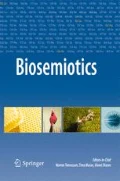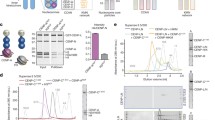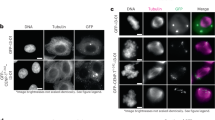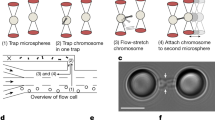Abstract
We apply molecular code theory to a rule-based model of the human inner kinetochore and study how complex formation in general can give rise to molecular codes. We analyze 105 reaction networks generated from the rule-based inner kinetochore model in two variants: with and without dissociation of complexes. Interestingly, we found codes only when some but not all complexes are allowed to dissociate. We show that this is due to the fact that in the kinetochore model proteins can only bind at kinetochores by attaching to already attached proteins and cannot form complexes in free solution. Using a generalized linear mixed model we study which centromere protein (CENP) can take which role in a molecular code (sign, meaning, context). By this, associations between CENPs (CenpA, CenpQ, CenpU and CenpI) and code roles are found. We observed that CenpA is a major risk factor (increases probability for code role) while CenpQ is a major protection factor (decreases probability for code role). Finally we show, using an abstract model of copolymer formation, that molecular codes can also be realized solely by the formation of stable complexes, which do not dissociate. For example, with particular dimers as context a molecular code mapping from two different monomers to two particular trimers can be realized just by non-selective complex formation. We conclude that the formation of protein complexes can be utilized by the cell to implement molecular codes. Living cells thus facilitate a subsystem allowing for an enormous flexibility in the realization of mappings, which can be used for specific regulatory processes, e.g. via the context of a mapping.








Similar content being viewed by others
Notes
External in the sense of the code, i.e. not the signs, or contexts itself.
References
Amaro, A.C., Samora, C.P., Holtackers, R., Wang, E., Kingston, I.J., Alonso, M., Lampson, M., McAinsh, A.D., Meraldi, P. (2010). Molecular control of kinetochore-microtubule dynamics and chromosome oscillations. Nature Cell Biology, 12, 319–329.
Barbieri, M. (2008a). Biosemiotics: a new understanding of life. Naturwissenschaften, 95(7), 577–599.
Barbieri, M. (Ed.) (2008b). Introduction to biosemiotics: the new biological synthesis. Springer: Dordrecht.
Bergmann, J.H., Rodriguez, M.G., Martins, N.M., Kimura, H., Kelly, D.A., Masumoto, H., Larionov, V., Jansen, L.E., Earnshaw, W.C. (2011). Epigenetic engineering shows H3K4me2 is required for HJURP targeting and CENP-A assembly on a synthetic human kinetochore. EMBO Journal, 30(2), 328–340.
Black, B.E., & Cleveland, D.W. (2011). Epigenetic centromere propagation and the nature of CENP-A nucleosomes. Cell, 144, 471–479.
Caydasi, A.K., Lohel, M., Gruenert, G., Dittrich, P., Pereira, G., Ibrahim, B. (2012). Dynamical model of the spindle position checkpoint. Molecular Systems Biology, 8, 582.
Cheeseman, I.M., & Desai, A. (2008). Molecular architecture of the kinetochore-microtubule interface. Nature Reviews Molecular Cell Biology, 9(1), 33–46.
Chen, T., Han, T., Kwiatkowska, M. (2013). On the complexity of model checking interval-valued discrete time markov chains. Inform Process Letter, 113(7), 210–216.
Cimini, D., & Degrassi, F. (2005). Aneuploidy: a matter of bad connections. Trends in Cell Biology, 15(8), 442–451.
Conzelmann, H., Saez-Rodriguez, J., Sauter, T., Kholodenko, B.N., Gilles, E. D. (2006). A domain-oriented approach to the reduction of combinatorial complexity in signal transduction networks. BMC Bioinformatics, 7, 34.
Dalal, Y., & Bui, M. (2010). Down the rabbit hole of centromere assembly and dynamics. Current Opinion in Cell Biology, 22, 392–402.
De Boer, B., & Verhoef, T. (2012). Language dynamics in structured form and meaning spaces. Advances in Complex Systems, 15(3–4), article 1150021.
Doncic, A., Ben-Jacob, E., Barkai, N. (2005). Evaluating putative mechanisms of the mitotic spindle checkpoint. Proceedings of the National Academy of Sciences of the United States of America, 102(18), 6332–6337.
Faeder, J.R., Blinov, M.L., Hlavacek, W.S. (2009). Rule-based modeling of biochemical systems with bionetgen. Methods in Molecular Biology, 500, 113–167.
Farkas, I., Derenyi, I., Barabasi, A., Vicsek, T. (2001). Spectra of real-world graphs: beyond the semicircle law. Physical Review E, 64(2), 026, 704.
Favareau, D. (2010). Essential Readings in Biosemiotics. Dordrecht: Springer.
Speroni di Fenizio, P., Dittrich, P., Banzhaf, W. (2001). Spontaneous formation of proto-cells in an universal artificial chemistry on a planar graph. In Proceedings of the 6th European conference on advances in artificial Life, ECAL ’01 (pp. 206–215). Springer-Verlag: London.
Feret, J., Danos, V., Krivine, J., Harmer, R., Fontana, W. (2009). Internal coarse-graining of molecular systems. Proceedings of the National Academy of Sciences of the United States of America, 106(16), 6453–6458.
Foltz, D.R., Jansen, L.E., Black, B.E., Bailey, A.O., Yates, J.R., Cleveland, D.W. (2006). The human CENP-A centromeric nucleosome-associated complex. Nature Cell Biology, 8(5), 458–469.
Forejt, V., Kwiatkowska, M., Parker, D. (2012). Pareto curves for probabilistic model checking. In Chakraborty, S., & Mukund, M. (Eds.), Proceeding of the 10th international symposium on automated technology for verification and analysis, lecture notes comparative science (Vol. 7561, pp. 317–332). Springer.
Gascoigne, K.E., & Cheeseman, I.M. (2010). Kinetochore assembly: if you build it, they will come. Current Opinion in Cell Biology, 23, 102–108.
Görlich, D. (2013). A formal model of molecular codes with respect to chemical reaction networks. PhD thesis, Friedrich-Schiller-Universität Jena.
Görlich, D., & Dittrich, P. (2013). Molecular codes in biological and chemical reaction networks. PLoS ONE, 8(1), e54,694. doi:10.1371/journal.pone.0054694.
Gruenert, G., Ibrahim, B., Lenser, T., Lohel, M., Hinze, T., Dittrich, P. (2010). Rule-based spatial modeling with diffusing, geometrically constrained molecules. BMC Bioinformatics, 11(1), 307.
Gruenert, G., Escuela, G., Dittrich, P. (2012). Symbol representations in evolving droplet computers. In Proceedings of the 11th international conference on unconventional computation and natural computation, UCNC’12 (pp. 130–140). Springer-Verlag: Heidelberg.
Hanissian, S.H., Akbar, U., Teng, B., Janjetovic, Z., Hoffmann, A., Hitzler, J.K., Iscove, N., Hamre, K., Du, X., Tong, Y., Mukatira, S., Robertson, J.H., Morris, S.W. (2004). cDNA cloning and characterization of a novel gene encoding the MLF1-interacting protein MLF1IP. Oncogene, 23(20), 3700–3707.
Harmer, R. (2010). Intrinsic information carriers in combinatorial dynamical systems. Chaos, 20(3), 037,108.
Holcombe, M., & Patton, R. (Eds.) (1998). Information processing in cells and tissues. New York: Plenum Press.
Holland, A.J., & Cleveland, D.W. (2009). Boveri revisited: chromosomal instability, aneuploidy and tumorigenesis. Nature Reviews Molecular Cell Biology, 10(7), 478–87.
Howman, E.V., Fowler, K.J., Newson, A.J., Redward, S., MacDonald, A.C., Kalitsis, P., Choo, K.H.A. (2000). Early disruption of centromeric chromatin organization in centromere protein A (cenpa) null mice. Proceedings of the National Academy of Sciences of the United States of America, 97(3), 1148–1153.
Hua, S., Wang, Z., Jiang, K., Huang, Y., Ward, T., Zhao, L., Dou, Z., Yao, X. (2011). CENP-U cooperates with Hec1 to orchestrate kinetochore-microtubule attachment. Journal of Biological Chemistry, 286(2), 1627–1638.
Ibrahim, B. (2008). Systems biology of mitosis. Phd thesis, Friedrich-Schiller-University Jena.
Ibrahim, B., Dittrich, P., Diekmann, S., Schmitt, E. (2007). Stochastic effects in a compartmental model for mitotic checkpoint regulation. Journal of Integrative Bioinformatics, 4(3), 66.
Ibrahim, B., Diekmann, S., Schmitt, E., Dittrich, P. (2008a). In-silico modeling of the mitotic spindle assembly checkpoint. PLoS ONE, 3(2), e1555.
Ibrahim, B., Dittrich, P., Diekmann, S., Schmitt, E. (2008b). Mad2 binding is not sufficient for complete cdc20 sequestering in mitotic transition control (an in silico study). Biophysical Chemistry, 134(1–2), 93–100.
Ibrahim, B., Schmitt, E., Dittrich, P., Diekmann, S. (2009). In silico study of kinetochore control, amplification, and inhibition effects in MCC assembly. BioSystems, 95, 35–50.
Klipp, E., Wade, R.C., Kummer, U. (2010). Biochemical network-based drug-target prediction. Current Opinion in Biotechnology, 21(4), 511–516.
Kreyssig, P., & Dittrich, P. (2011). Fragments and chemical organisations. Electrical Notes Theory Computer Science, 272, 19–41.
Kreyssig, P., Escuela, G., Reynaert, B., Veloz, T., Ibrahim, B., Dittrich, P. (2012). Cycles and the qualitative evolution of chemical systems. PLoS ONE, 7(10), e45,772.
Lenser, T., Hinze, T., Ibrahim, B., Dittrich, P. (2007). Towards evolutionary network reconstruction tools for systems biology. In Evolutionary computation, machine learning and data mining in bioinformatics, 5th European conference (pp. 1500–1511).
Li, M., Fang, X., Wei, Z., York, J.P., Zhang, P. (2009). Loss of spindle assembly checkpoint-mediated inhibition of cdc20 promotes tumorigenesis in mice. Journal of Cellular Biology, 185(6), 983–994.
Liu, S.T., Hittle, J.C., Jablonski, S.A., Campbell, M.S., Yoda, K., Yen, T.J. (2003). Human CENP-I specifies localization of CENP-F, MAD1 and MAD2 to kinetochores and is essential for mitosis. Nature Cell Biology, 5(4), 341–345.
Lohel, M., Ibrahim, B., Diekmann, S., Dittrich, P. (2009). The role of localization in the operation of the mitotic spindle assembly checkpoint. Cell Cycle, 8, 2650–2660.
Maiato, H., DeLuca, J., Salmon, E.D., Earnshaw, W.C. (2004). The dynamic kinetochore-microtubule interface. Journal of Cell Science, 117, 5461–5477.
Nishino, T., Takeuchi, K., Gascoigne, K.E., Suzuki, A., Hori, T., Oyama, T., Morikawa, K., Cheeseman, I.M., Fukagawa, T. (2012). CENP-T-W-S-X forms a unique centromeric chromatin structure with a histone-like fold. Cell, 148, 487–501.
Obuse, C., Yang, H., Nozaki, N., Goto, S., Okazaki, T., Yoda, K. (2004). Proteomics analysis of the centromere complex from HeLa interphase cells: UV-damaged DNA binding protein 1 (DDB-1) is a component of the CEN-complex, while BMI-1 is transiently co-localized with the centromeric region in interphase. Genes Cells, 9(2), 105–120.
Okada, M., Cheeseman, I.M., Hori, T., Okawa, K., McLeod, I.X., Yates, J.R., Desai, A., Fukagawa, T. (2006). The CENP-H-I complex is required for the efficient incorporation of newly synthesized CENP-A into centromeres. Nature Cell Bioliogy, 8, 446–457.
Perpelescu, M., & Fukagawa, T. (2011). The abcs of cenps. Chromosoma, 120, 425–446.
Quenet, D., & Dalal, Y. (2012). The CENP-A nucleosome: a dynamic structure and role at the centromere. Chromosome Research, 20(5), 465–479.
Rohn, H., Ibrahim, B., Lenser, T., Hinze, T., Dittrich, P. (2008). Enhancing parameter estimation of biochemical networks by exponentially scaled search steps. Proceedings of the 6th European conference on evolutionary computation, machine learning and data mining in bioinformatics (pp. 177–187). Heidelberg, EvoBIO’08: Springer-Verlag.
Savir, Y., & Tlusty, T. (2013). The ribosome as an optimal decoder: a lesson in molecular recognition. Cell, 153(2), 471–479.
Sebeok, T.A. (2001). Biosemiotics: its roots, proliferation, and prospects. Semiotica, 134(1/4), 61–78.
Shannon, C.E. (1948). A mathematical theory of communication. Bell System Technical Journal, 27, 379–423.
Stoler, S., Keith, K.C., Curnick, K.E., Fitzgerald-Hayes, M. (1995). A mutation in CSE4, an essential gene encoding a novel chromatin-associated protein in yeast, causes chromosome nondisjunction and cell cycle arrest at mitosis. Genes and Development, 9(5), 573–586.
Suijkerbuijk, S.J., & Kops, G.J. (2008). Preventing aneuploidy: the contribution of mitotic checkpoint proteins. Biochimica et Biophysica Acta, 1786(1), 24–31.
Sullivan, K.F., Hechenberger, M., Masri, K. (1994). Human cenp-A contains a histone h3 related histone fold domain that is required for targeting to the centromere. The Journal of Cell Biology, 127(3), 581–592.
Topp, C.N., Zhong, C.X., Dawe, R.K. (2004). Centromere-encoded RNAs are integral components of the maize kinetochore. Proceedings of the National Academy of Science USA, 101(45), 15,986–15,991.
Tschernyschkow, S., Herda, S., Gruenert, G., Doring, V., Gorlich, D., Hofmeister, A., Hoischen, C., Dittrich, P., Diekmann, S., Ibrahim, B. (2013). Rule-based modeling and simulations of the inner kinetochore structure. Progress in Biophysics and Molecular Biology, 113(1), 33–45.
Waltermann, C., & Klipp, E. (2011). Information theory based approaches to cellular signaling. Biochimica et Biophysica Acta, 1810, 924–932.
Author information
Authors and Affiliations
Corresponding author
Additional information
This work was supported by the German Research Foundation priority programs InKoMBio (SPP 1395, Grant DI 852/10-1), the European Commission NeuNeu Project (248992) and the Jena School for Microbial Communication (JSMC).
Appendix
Appendix
Rights and permissions
About this article
Cite this article
Görlich, D., Escuela, G., Gruenert, G. et al. Molecular Codes Through Complex Formation in a Model of the Human Inner Kinetochore. Biosemiotics 7, 223–247 (2014). https://doi.org/10.1007/s12304-013-9193-5
Received:
Accepted:
Published:
Issue Date:
DOI: https://doi.org/10.1007/s12304-013-9193-5
Keywords
- Molecular codes
- Modeling approaches
- Inner kinetochore
- Rule-based modeling
- Generalized linear mixed models
- S-phase








